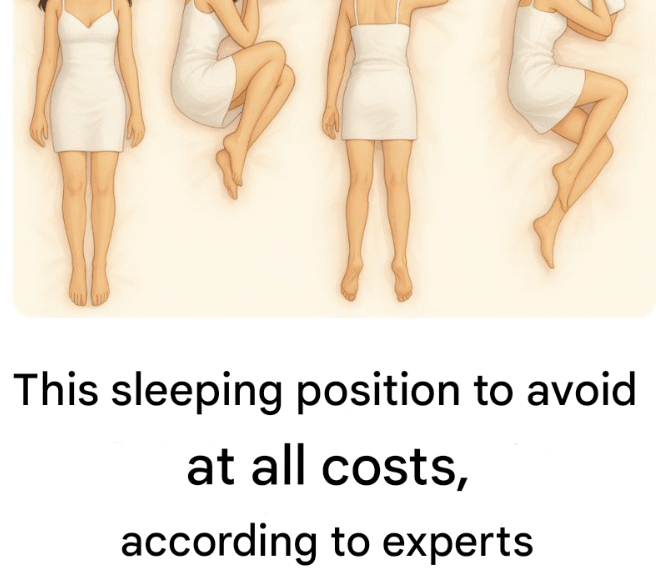A good night’s sleep is essential for mental clarity, emotional balance, and physical health. But did you know that your sleeping position could be undermining all the benefits of rest — and even contributing to chronic health problems?
While some positions may feel comfortable in the moment, sleep specialists, chiropractors, and physical therapists warn that certain sleeping positions can be detrimental to your health, leading to back and neck pain, digestive issues, breathing difficulties, poor circulation, and even premature aging.
In this article, we’ll explore the worst sleeping positions you should avoid, the science behind why they’re harmful, and what positions you should adopt instead for optimal rest and long-term wellness.
🚫 1. Sleeping on Your Stomach (Prone Position) – The Most Dangerous
This is the #1 sleeping position health experts say you should avoid at all costs.
Why it’s harmful:
- Neck strain: Turning your head to the side for hours puts intense pressure on your cervical spine, leading to neck pain, headaches, and stiffness.
- Spinal misalignment: Your back arches unnaturally, causing pressure on spinal discs.
- Breathing problems: The chest and abdomen are compressed, restricting lung capacity and oxygen intake.
- Premature aging: Pressing your face into the pillow increases friction, causing fine lines, wrinkles, and breakouts.
Who should especially avoid it:
- People with back or neck pain
- Individuals with sleep apnea or asthma
- Those concerned about skin health or facial wrinkles
🚫 2. Fetal Position (Tightly Curled Side-Sleeping)
While side sleeping can be beneficial, the fetal position — when your body is tightly curled with knees to chest and chin tucked — can be problematic if too extreme.
Why it’s harmful:
- Restricted diaphragm: Makes deep breathing difficult, reducing oxygen intake during sleep.
- Neck and back pain: The curvature puts strain on the spine, especially the lower back and neck.
- Joint stiffness: Curling up tight all night can cause tightness and stiffness in the knees and hips.
Tip: If you prefer side sleeping, keep your spine straight and knees slightly bent, not tucked into your chest.
🚫 3. Sleeping with One Arm Under Your Head or Pillow
Many people fall asleep with an arm tucked under the pillow or their head. While it might feel cozy initially, it can wreak havoc on your circulation and nerves.
Why it’s harmful:
- Nerve compression: Can lead to numbness, tingling, or “dead arm” sensation.
- Shoulder damage: Long-term pressure may contribute to rotator cuff injuries or bursitis.
- Neck misalignment: Tilts your head unnaturally, causing stiffness and pain.
Alternative:
Use a properly supportive pillow and keep arms relaxed by your sides or resting in front of your body.
🚫 4. Sleeping on Your Back with Your Arms Above Your Head (“Starfish Position”)
While back sleeping is usually good for spinal alignment, the “starfish position” — where arms are raised above the head — may cause specific problems.
Why it’s harmful:
- Shoulder impingement: Keeps the shoulder joint in a strained position, leading to pain or tendonitis.
- Nerve issues: Can compress nerves in the shoulder or arm, especially if combined with a poor mattress.
- Sleep disruption: Studies show people in this position often toss and turn more during the night.
🛌 Healthier Alternatives Recommended by Sleep Experts
CONTINUE READING IN PAGE 2





